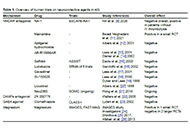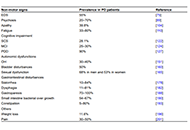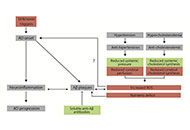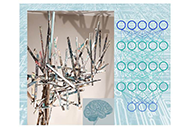Machine learning as a new tool in neurological disease prevention, diagnosis, and treatment
More than 600 different neurological diseases affect the human population. Some of these are genetic and can emerge even before birth, and some are caused by defects, infections, trauma, degeneratio
[...] Read more.
More than 600 different neurological diseases affect the human population. Some of these are genetic and can emerge even before birth, and some are caused by defects, infections, trauma, degeneration, inflammation, and cancer. However, they all share disabilities caused by damage to the nervous system. In the last decades, the burden of almost all neurological disorders has increased in terms of absolute incidence, prevalence, and mortality, largely due to the population’s growth and aging. This represents a dangerous trend and should become our priority for the future. But what new goals are we going to set and reach now, and how will we exploit thought-provoking technological skills for making these goals feasible? Machine learning can be at the root of the problem. Indeed, most recently, there has been a push towards medical data analysis by machine learning, and a great improvement in the training capabilities particularly of artificial deep neural networks (DNNs) inspired by the biological neural networks characterizing the human brain. This has generated competitive results for applications such as biomolecular target and protein structure prediction, structure-based rational drug design, and repurposing, all exerting a major impact on neuroscience and human well-being. By approaching early risks for diseases, non-invasive diagnosis, personalized treatment assessment, drug discovery, and automated science, the machine learning arena has thus the potential of becoming the new frontier for empowering neuroscience research and clinical practice in the years ahead.
Cinzia Volonté
View:2024
Download:48
Times Cited: 0
More than 600 different neurological diseases affect the human population. Some of these are genetic and can emerge even before birth, and some are caused by defects, infections, trauma, degeneration, inflammation, and cancer. However, they all share disabilities caused by damage to the nervous system. In the last decades, the burden of almost all neurological disorders has increased in terms of absolute incidence, prevalence, and mortality, largely due to the population’s growth and aging. This represents a dangerous trend and should become our priority for the future. But what new goals are we going to set and reach now, and how will we exploit thought-provoking technological skills for making these goals feasible? Machine learning can be at the root of the problem. Indeed, most recently, there has been a push towards medical data analysis by machine learning, and a great improvement in the training capabilities particularly of artificial deep neural networks (DNNs) inspired by the biological neural networks characterizing the human brain. This has generated competitive results for applications such as biomolecular target and protein structure prediction, structure-based rational drug design, and repurposing, all exerting a major impact on neuroscience and human well-being. By approaching early risks for diseases, non-invasive diagnosis, personalized treatment assessment, drug discovery, and automated science, the machine learning arena has thus the potential of becoming the new frontier for empowering neuroscience research and clinical practice in the years ahead.
 Neuroprotective agents in acute ischemic strokeOpen AccessReviewAcute ischemic stroke (AIS) is the leading cause of disability and one of the top causes of mortality worldwide. The current standard of care is reperfusion therapy including intravenous thrombolysi [...] Read more.Grace YY Chia ... Benjamin YQ TanPublished: February 28, 2023 Explor Neuroprot Ther. 2023;3:47–70
Neuroprotective agents in acute ischemic strokeOpen AccessReviewAcute ischemic stroke (AIS) is the leading cause of disability and one of the top causes of mortality worldwide. The current standard of care is reperfusion therapy including intravenous thrombolysi [...] Read more.Grace YY Chia ... Benjamin YQ TanPublished: February 28, 2023 Explor Neuroprot Ther. 2023;3:47–70 Pathophysiology of non-motor signs in Parkinson’s disease: some recent updating with brief presentationOpen AccessReviewParkinson’s disease (PD) is a progressive neurodegenerative disorder affecting 1% of the population above sixty years. It is caused by an interaction between genetic and envi [...] Read more.Khaled Radad ... Wolf-Dieter RauschPublished: February 27, 2023 Explor Neuroprot Ther. 2023;3:24–46
Pathophysiology of non-motor signs in Parkinson’s disease: some recent updating with brief presentationOpen AccessReviewParkinson’s disease (PD) is a progressive neurodegenerative disorder affecting 1% of the population above sixty years. It is caused by an interaction between genetic and envi [...] Read more.Khaled Radad ... Wolf-Dieter RauschPublished: February 27, 2023 Explor Neuroprot Ther. 2023;3:24–46 Can chronic therapeutic drug use by the elderly affect Alzheimer’s disease risk and rate of progression?Open AccessReviewThere is no approved drug capable of halting the progression of the most prevalent neurodegenerative disorders, namely Alzheimer's disease (AD) and Parkinson's disease (PD). [...] Read more.Rafael Franco, Joan Serrano-MarínPublished: February 27, 2023 Explor Neuroprot Ther 2023;3:8–23
Can chronic therapeutic drug use by the elderly affect Alzheimer’s disease risk and rate of progression?Open AccessReviewThere is no approved drug capable of halting the progression of the most prevalent neurodegenerative disorders, namely Alzheimer's disease (AD) and Parkinson's disease (PD). [...] Read more.Rafael Franco, Joan Serrano-MarínPublished: February 27, 2023 Explor Neuroprot Ther 2023;3:8–23 Machine learning as a new tool in neurological disease prevention, diagnosis, and treatmentOpen AccessPerspectiveMore than 600 different neurological diseases affect the human population. Some of these are genetic and can emerge even before birth, and some are caused by defects, infections, trauma, degeneratio [...] Read more.Cinzia VolontéPublished: February 21, 2023 Explor Neuroprot Ther. 2023;3:1–7
Machine learning as a new tool in neurological disease prevention, diagnosis, and treatmentOpen AccessPerspectiveMore than 600 different neurological diseases affect the human population. Some of these are genetic and can emerge even before birth, and some are caused by defects, infections, trauma, degeneratio [...] Read more.Cinzia VolontéPublished: February 21, 2023 Explor Neuroprot Ther. 2023;3:1–7